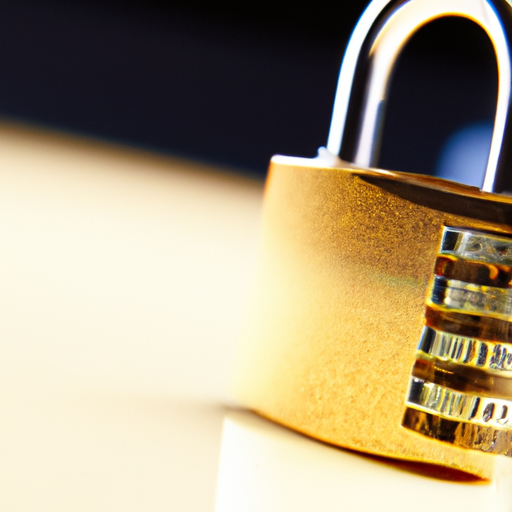What Is The Role Of A Chief Information Security Officer (CISO)?
In today’s digital age, the role of a Chief Information Security Officer (CISO) has become increasingly crucial. As organizations face ever-evolving cyber threats and data breaches, the CISO plays a vital role in safeguarding sensitive information and ensuring the integrity of crucial systems. Acting as the guardian of digital assets, the CISO not only implements security measures but also develops robust strategies to proactively address potential risks. With their expertise and dedication, they are instrumental in promoting a secure environment that enables businesses to thrive in an increasingly interconnected world.
Overview of the Role
Definition of a CISO
A Chief Information Security Officer (CISO) is a senior-level executive responsible for overseeing and managing the information security program of an organization. They play a crucial role in protecting the organization’s sensitive data, intellectual property, and technology infrastructure from potential threats and cyberattacks.
Importance of a CISO in Organizations
The role of a CISO is of paramount importance in organizations today due to the increasing frequency and complexity of cyber threats. With the rapid advancements in technology, organizations face a multitude of security risks and vulnerabilities that can have severe consequences. A CISO provides the necessary leadership and expertise to mitigate these risks and ensure the confidentiality, integrity, and availability of critical organizational assets.
By creating and implementing robust security strategies, a CISO supports the overall business objectives of the organization, builds customer trust, and enhances the organization’s reputation. They act as a bridge between the executive management and the information security team, ensuring that security practices align with business objectives, regulatory requirements, and industry best practices.
Responsibilities of a CISO
As a CISO, you are responsible for a wide range of critical tasks and initiatives. Your primary responsibilities include establishing and maintaining a comprehensive information security program, ensuring the confidentiality and privacy of data, managing security incidents, and maintaining compliance with relevant laws and regulations.
In addition to these core responsibilities, you are also responsible for setting the organizational security strategy, managing the security team, aligning security with business objectives, identifying and assessing security risks, implementing security controls and measures, developing incident response plans, ensuring compliance with applicable laws and regulations, overseeing internal and external audits, and addressing data privacy and protection requirements.
CISO’s Leadership and Management
Setting the Organizational Security Strategy
As a CISO, one of your key responsibilities is to set the organizational security strategy. This involves understanding the organization’s goals, objectives, and risk appetite, and translating them into a comprehensive security strategy. By assessing the current security landscape, identifying potential threats, and evaluating the effectiveness of existing security controls, you can develop a strategy that aligns with the organization’s overall business objectives and risk tolerance.
Managing the Security Team
Leading and managing the security team is essential for the successful implementation of the organization’s security program. As a CISO, you are responsible for recruiting and building a highly skilled and capable team of security professionals. You need to provide clear direction, establish performance expectations, and empower your team to execute their responsibilities effectively. By fostering a culture of collaboration, continuous improvement, and professional development, you can create a high-performing security team.
Aligning Security with Business Objectives
An important aspect of a CISO’s role is to align security with the organization’s business objectives. By collaborating with executive management and key stakeholders, you can ensure that security considerations are integrated into the organization’s strategic planning process. This alignment ensures that security investments, initiatives, and resources are prioritized based on the organization’s overall goals and risk profile. It also helps foster a culture of security awareness and accountability throughout the organization.
Ensuring Information Security
Identifying and Assessing Security Risks
A fundamental responsibility of a CISO is to identify and assess security risks faced by the organization. This involves conducting regular risk assessments, analyzing the organization’s technology infrastructure, information assets, and business processes to identify vulnerabilities and potential threats. By understanding the risks, you can develop a risk management strategy and prioritize security initiatives accordingly.
Implementing Security Controls and Measures
Once the security risks have been identified and assessed, it is crucial to implement appropriate security controls and measures to mitigate those risks. This involves developing and implementing security policies, procedures, and technical controls to safeguard the organization’s assets and systems. By staying up-to-date with industry best practices and emerging threats, you can implement effective security controls that align with the organization’s risk appetite and regulatory requirements.
Monitoring and Detecting Security Incidents
Detecting and responding to security incidents in a timely manner is a critical aspect of information security. A CISO is responsible for implementing monitoring tools, technologies, and processes to detect potential security incidents. By leveraging security information and event management (SIEM) systems, intrusion detection systems (IDS), and other monitoring solutions, you can proactively detect and respond to security incidents. This helps minimize the impact of potential breaches and compromises.
Developing Incident Response Plans
Preparing for and responding to security incidents is a key responsibility of a CISO. By developing a robust incident response plan, you can ensure a swift and effective response to security incidents. This plan should outline the roles and responsibilities of the incident response team, the procedures for incident identification, containment, eradication, and recovery, and the communication protocols with internal and external stakeholders. Regular testing and updating of the plan are essential to ensure its effectiveness.
Compliance and Regulatory Responsibilities
Ensuring Compliance with Applicable Laws and Regulations
Compliance with applicable laws and regulations is a critical responsibility of any organization, and as a CISO, you play a vital role in ensuring compliance related to information security. This involves staying up-to-date with relevant laws and regulations, such as data protection and privacy laws, industry-specific regulations, and international standards. By establishing and maintaining effective policies, procedures, and technical controls, you can meet the organization’s legal obligations and minimize the risk of regulatory penalties and reputational damage.
Overseeing Internal and External Audits
Internal and external audits play a crucial role in assessing the effectiveness of an organization’s information security program. As a CISO, you are responsible for overseeing and coordinating these audits. This involves working closely with internal audit teams, external auditors, and regulatory bodies to ensure that audit objectives are aligned with the organization’s security goals. By addressing audit findings and implementing necessary improvements, you can enhance the overall security posture of the organization.
Maintaining Necessary Certifications
Maintaining necessary certifications is an important aspect of a CISO’s role. Certifications such as Certified Information Systems Security Professional (CISSP), Certified Information Security Manager (CISM), and Certified Information Systems Auditor (CISA) validate your expertise and demonstrate your commitment to professional development. By staying up-to-date with the latest industry standards and best practices, you can enhance your credibility as a security professional and provide valuable guidance to the organization.
Addressing Data Privacy and Protection Requirements
Data privacy and protection have become significant concerns for organizations in the digital age. As a CISO, you are responsible for addressing these requirements and ensuring that sensitive data is appropriately protected. This involves developing and implementing policies and procedures for data classification, access control, data retention, and secure data handling. By collaborating with legal and compliance teams, you can ensure that the organization meets its obligations regarding data privacy and protection.
Security Policy Development
Creating and Updating Information Security Policies
Information security policies serve as the foundation of an organization’s security program. As a CISO, you are responsible for creating and updating these policies to address emerging threats, changing business needs, and regulatory requirements. Policies should clearly outline expectations, responsibilities, and guidelines for employees and other stakeholders regarding information security practices. By ensuring that policies are communicated, understood, and enforced, you can establish a culture of security throughout the organization.
Defining Security Standards and Guidelines
In addition to policies, a CISO is responsible for defining security standards and guidelines. These standards provide specific technical requirements and recommendations for implementing security controls and measures. By establishing standards that align with industry best practices, regulatory requirements, and the organization’s risk tolerance, you can ensure consistency and effectiveness in the implementation of security controls.
Establishing Security Awareness and Training Programs
Effective security awareness and training programs are essential to educate employees about their role in maintaining information security. As a CISO, you play a crucial role in establishing these programs. This involves developing training materials, conducting security awareness sessions, and providing regular updates on emerging threats and best practices. By fostering a culture of security awareness, you can empower employees to become the first line of defense against potential security risks.
Vendor and Third-Party Management
Assessing and Managing Security Risks of Vendors and Third Parties
Organizations often rely on vendors and third parties for various services and solutions. However, these relationships can introduce security risks and vulnerabilities. As a CISO, you are responsible for assessing the security risks associated with vendors and third parties. This involves conducting due diligence, assessing their security controls and practices, and ensuring that they meet the organization’s security requirements. By implementing vendor risk management processes, you can mitigate potential risks and protect the organization’s interests.
Establishing and Enforcing Security Requirements in Contracts
To ensure that vendors and third parties adhere to the organization’s security standards, it is essential to establish and enforce security requirements in contracts and agreements. As a CISO, you need to work closely with legal and procurement teams to include contractual provisions related to information security, data privacy, incident reporting, and access controls. By incorporating these requirements, you can maintain control over the security of shared data and systems.
Performing Regular Security Assessments
Once vendors and third parties have been onboarded, it is crucial to conduct regular security assessments to ensure ongoing compliance with security requirements. As a CISO, you are responsible for coordinating and performing these assessments, which may include vulnerability scans, penetration tests, and security audits. By identifying potential weaknesses or vulnerabilities, you can initiate remediation measures and ensure that the organization’s security posture is not compromised by its business relationships.
Incident Response and Cybersecurity Threats
Leading Incident Response Efforts
In the event of a security incident, a CISO plays a critical role in leading the incident response efforts. This involves coordinating the incident response team, conducting initial assessments of the incident’s impact and scope, and taking appropriate actions to contain and mitigate the incident. By establishing clear lines of communication, defining incident response roles and responsibilities, and conducting regular incident response drills, you can ensure a swift and effective response to potential security breaches.
Coordinating with Internal and External Stakeholders
Effective coordination with internal and external stakeholders is crucial during incident response efforts. As a CISO, you need to collaborate with executive management, legal teams, public relations, law enforcement agencies, and external incident response providers. By maintaining open lines of communication, sharing relevant information, and coordinating response activities, you can minimize the impact of security incidents and protect the organization’s reputation.
Managing Cybersecurity Threats and Vulnerabilities
As cyber threats continue to evolve, a CISO must be proactive in managing cybersecurity threats and vulnerabilities. This involves staying up-to-date with the latest threat intelligence, analyzing potential vulnerabilities, and implementing appropriate safeguards. By leveraging threat intelligence platforms, collaborating with industry peers, and investing in emerging technologies, you can build a robust defense system to identify, prevent, and respond to cyber threats effectively.
Security Governance and Risk Management
Establishing a Security Governance Framework
A CISO is responsible for establishing a security governance framework that defines the structure, processes, and controls for managing information security across the organization. This framework ensures that security activities are aligned with the organization’s overall governance structure, business objectives, and risk management practices. By establishing clear accountability, defining roles and responsibilities, and implementing effective governance mechanisms, you can ensure that information security receives the necessary attention and resources.
Implementing Risk Management Processes
Risk management is a critical component of an effective information security program. As a CISO, you are responsible for implementing risk management processes to identify, assess, and manage security risks. This involves conducting risk assessments, analyzing the impact and likelihood of potential risks, and implementing appropriate risk mitigation measures. By integrating risk management into the organization’s decision-making processes and fostering a risk-aware culture, you can minimize the potential impact of security incidents.
Conducting Security Audits and Risk Assessments
Periodic security audits and risk assessments are essential to evaluate the effectiveness of the organization’s information security program. As a CISO, you need to coordinate and oversee these assessments to identify potential gaps, vulnerabilities, and areas for improvement. This may include conducting internal audits, engaging external auditors, and leveraging industry frameworks and standards. By addressing the findings of audits and risk assessments, you can continuously enhance the security posture of the organization.
Ensuring Enterprise-Wide Security Awareness
Enterprise-wide security awareness is crucial for building a culture of security within the organization. As a CISO, you are responsible for ensuring that all employees receive appropriate security training and education. This includes creating awareness campaigns, developing training materials, and conducting regular training sessions. By promoting security awareness at all levels of the organization, you can empower employees to recognize potential security risks and take appropriate actions to mitigate them.
Technology Evaluation and Implementation
Identifying and Selecting Security Technologies
As technology continues to evolve, a CISO must stay abreast of the latest security technologies and trends in the market. You are responsible for identifying and selecting appropriate security technologies that align with the organization’s security needs, risk profile, and budget. By evaluating the features, functionality, and effectiveness of different technologies, you can make informed decisions and invest in solutions that provide maximum value and protection.
Evaluating and Implementing Security Solutions
Once security technologies have been identified and selected, a CISO is responsible for overseeing their evaluation and implementation. This involves conducting proof-of-concept tests, assessing the compatibility with existing systems and processes, and ensuring the smooth integration of new solutions. By closely collaborating with IT teams, vendors, and stakeholders, you can ensure that security solutions are deployed effectively and meet the organization’s security objectives.
Ensuring Secure Technology Development Practices
In addition to evaluating and implementing security solutions, a CISO plays a vital role in ensuring secure technology development practices. This involves working closely with software development teams to embed security best practices into the software development life cycle (SDLC). By conducting code reviews, implementing secure coding standards, and integrating security testing into the development process, you can minimize the risk of introducing vulnerabilities into the organization’s applications and systems.
Continuous Improvement and Industry Awareness
Staying Up-to-Date with Industry Trends and Emerging Threats
The landscape of information security is constantly evolving, with new threats, vulnerabilities, and technologies emerging regularly. As a CISO, it is essential to stay up-to-date with industry trends and continuously monitor emerging threats. By participating in industry forums, attending conferences, and engaging with professional networks, you can stay informed about the latest developments and adapt your security practices accordingly.
Evaluating and Enhancing Security Programs
Continuous evaluation and enhancement of the organization’s security programs are key responsibilities of a CISO. This involves conducting regular reviews, analyzing security metrics and performance indicators, and identifying areas for improvement. By leveraging the insights gained from audits, risk assessments, incident response, and performance metrics, you can enhance the effectiveness of security programs and ensure that they remain aligned with the organization’s evolving needs.
Participating in Professional Networks and Organizations
Engagement with professional networks and organizations is crucial for a CISO to stay connected with peers, share knowledge, and exchange best practices. By joining security-focused associations, participating in industry forums, and contributing to thought leadership initiatives, you can broaden your professional network and contribute to the advancement of the information security field.
In conclusion, the role of a Chief Information Security Officer (CISO) is critical in ensuring the protection and integrity of an organization’s information assets. From setting the organizational security strategy to managing the security team, from ensuring compliance with applicable laws and regulations to responding to security incidents, a CISO’s responsibilities are vast and diverse. By proactively addressing security risks, developing comprehensive policies and procedures, and staying up-to-date with industry trends and emerging threats, a CISO can navigate the ever-changing landscape of information security and safeguard the organization’s valuable assets.








